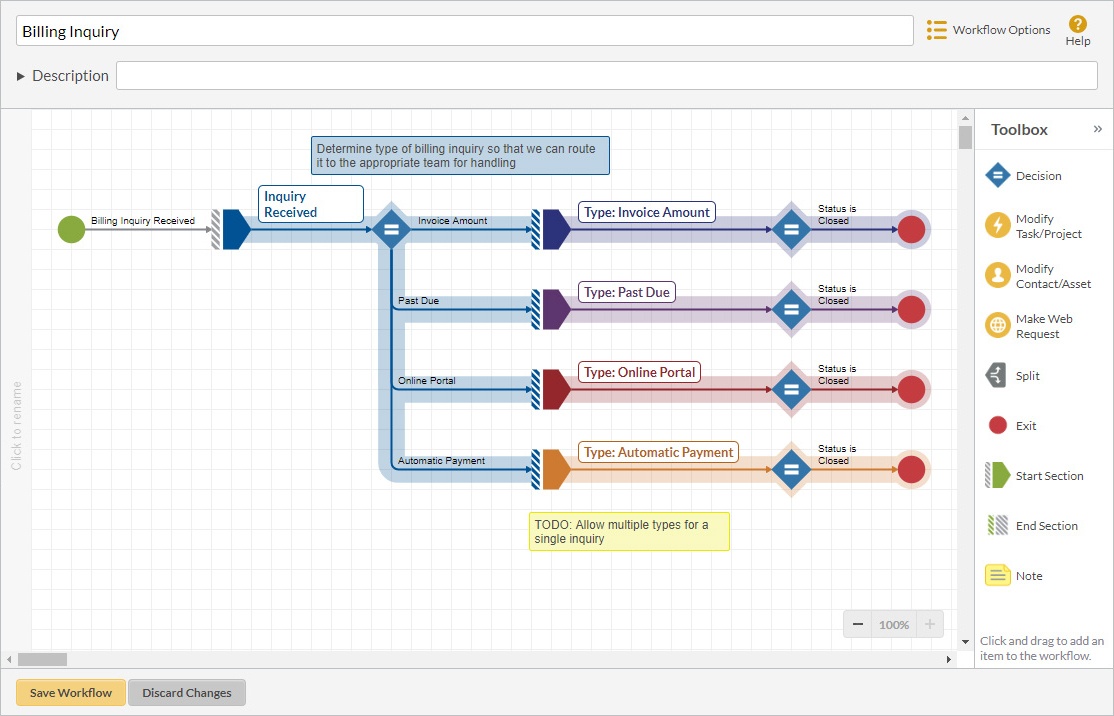Automating business processes using workflow automation software can deliver major performance & QA benefits. Workflow and process automation may have their roots in manufacturing, however transactional processes, i.e. non-manufacturing ones, also benefit from their application. Automation helps improve business processes no matter where they are found, leading to significant productivity benefits, reductions in defect rates, and inventory reductions.
The major advantages of workflow and automation are:
Visibility
Even with a well-established set of processes, you may not have a full picture of them, particularly if there are point solutions and shadow processes involved. Automation explicitly requires an understanding and mapping out of the processes, and in doing so you will gain a much more accurate picture of what is actually going on. This visibility also provides the ability to establish KPIs and metrics, which then forms the basis for process improvement.
Identifying Redundant Activity
Gaining visibility on actual processes also allows you to assess whether a step or series of activities are really necessary. Eliminating redundant steps speeds up your processes and improves efficiency.
Modifying Step Order
Initially, at least, many processes start life as a sequential set of activities, however there are two major benefits to be gained once you have control and visibility. The first is identifying the optimal order for the component tasks, and re-arranging task order can deliver major benefits, for instance retaining a work item in a department until all tasks are completed upon it, prior to moving it on to the next team or department.
The second advantage is that you are also able to identify where work can be conducted in parallel as opposed to straight-line sequential, dramatically improving efficiency.

Maintain and Improve Quality
Automating work activities means that you are able to match work with staff who have the appropriate skills, rather than assigning work on the basis of who happens to be available. The latter method of assigning work acts to compromise quality standards, the former ought to maintain or improve them.
A further quality benefit of automation is that by standardizing processes, you are better able to ensure standards are adhered to and replicate finished work product again and again.
If you remove or reduce human interaction in a system, you will also eliminate the scope for human error. By automating workflows and business processes you will also drastically reduce the ability for human error to occur.
Focusing Management Thinking on Strategy
Automation reduces the need for management oversight of daily operational issues – the workflow system itself acts as over watch, notifying management of issues rather than requiring constant monitoring by them. Reducing time spent on operations management means more time is available for strategy and growth activities.
Reduction in Paper Burden
Automation platforms maintain digital documentation, which follows the work item as it proceeds through the workflow. This removes the element of paper chasing, as staff hunt for associated documentation which may not have physically transited with the work item. Everything associated with the work item travels with it, and is instantly accessible to those who need it, when they need it.
Audit Trail
Workflow is directly attached to a database which records every action on the platform. This means that you know who did what, when and where, providing an indelible record to fall back upon in the event of an issue.

